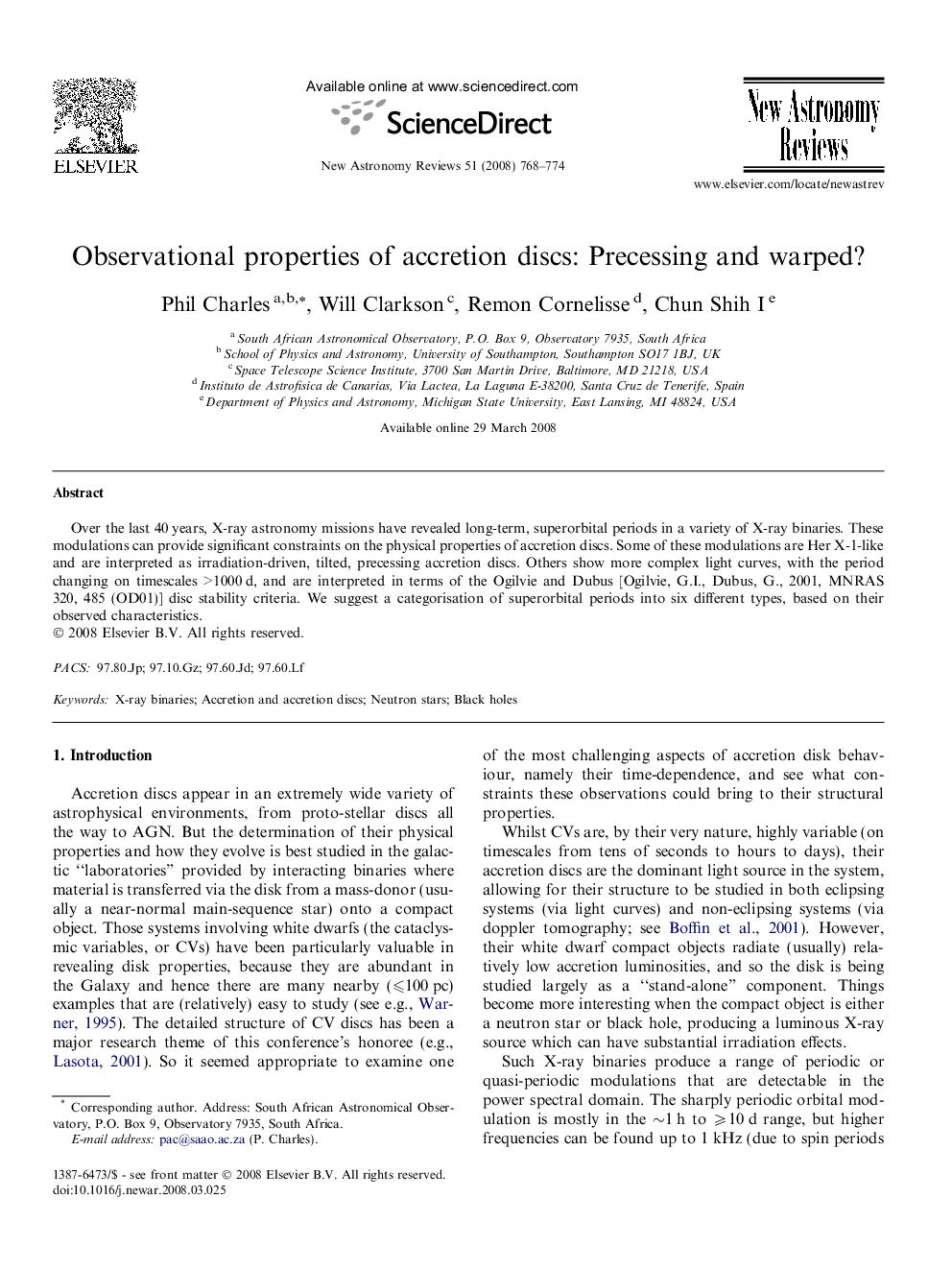| Article ID | Journal | Published Year | Pages | File Type |
|---|---|---|---|---|
| 1780150 | New Astronomy Reviews | 2008 | 7 Pages |
Abstract
Over the last 40 years, X-ray astronomy missions have revealed long-term, superorbital periods in a variety of X-ray binaries. These modulations can provide significant constraints on the physical properties of accretion discs. Some of these modulations are Her X-1-like and are interpreted as irradiation-driven, tilted, precessing accretion discs. Others show more complex light curves, with the period changing on timescales >1000 d, and are interpreted in terms of the Ogilvie and Dubus [Ogilvie, G.I., Dubus, G., 2001, MNRAS 320, 485 (OD01)] disc stability criteria. We suggest a categorisation of superorbital periods into six different types, based on their observed characteristics.
Related Topics
Physical Sciences and Engineering
Physics and Astronomy
Astronomy and Astrophysics
Authors
Phil Charles, Will Clarkson, Remon Cornelisse, Chun Shih I,
